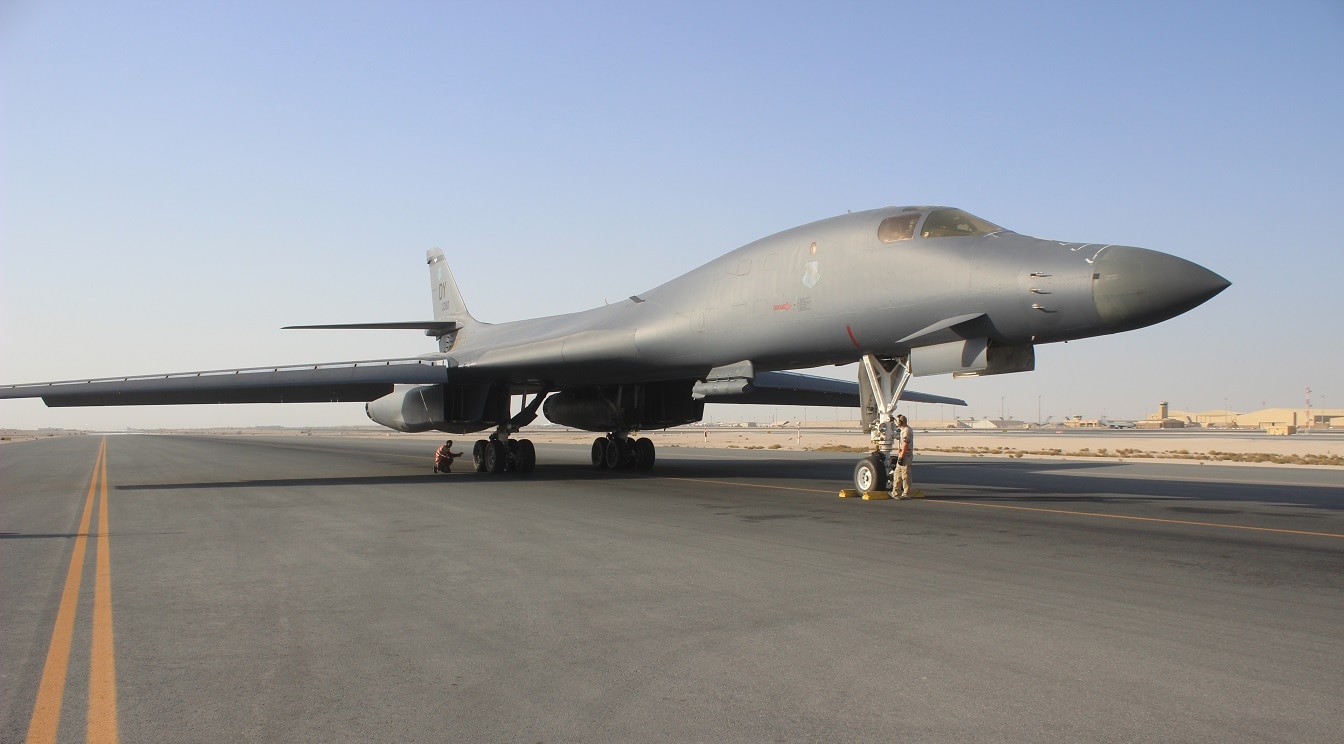B-1B Bomber: Congress Votes to Keep It For Now: Hello again, B-1B bomber, it looks like you’re not going away.
Congress in the latest FY22 National Defense Authorization Act has called for the aging, non-stealthy B-1B Lancer to stick around until the new stealth B-21 Raider bomber is ready for service. That won’t be until at least 2026. So, let’s discuss what that means for the Air Force and whether the B-1B can continue to do the job.
Retiring the B-1B; Not So Fast
Congress is pumping the breaks on retiring the B-1B. One of the main reasons why is that the airplane is still relevant. In November, it returned from a four-month deployment to England where it flew with NATO allies from combatant commands in Europe and Africa. Two of the known training missions were over the Baltic Sea and the Black Sea.
It Will Have Stealth Fighter Escorts from Allied Countries
The B-1Bs worked with F-35 Lighting II fighter escorts from the Norwegian Air Force, plus they interacted with airplanes from Romania, Canada, and Poland. They also conducted close air support drills and worked on counter-maritime air policing with NATO.
Keep the Russians at Bay
The idea is to deter Russia and in fact, all this activity had the Russians on alert. One NATO training mission was scoped out by the Russian Air Force and it scrambled two fighters to intercept a B-1B when it was re-fueling over the Black Sea.
Look Out Indio-Pacific; B-1Bs are Working There Too
That’s not all, the B-1B also deployed in October to Diego Garcia for activity in the Indo-Pacific region. This gave the airplanes access to the strategic South China Sea. B-1Bs haven’t been in Diego Garcia in 15-years so it shows the importance of the airplane to East Asia war planners in the Air Force.
The “Bone” Still Has Sharp Elbows
The B-1B supersonic strategic bomber is a large swing-wing airplane. Nicknamed the “Bone” by pilots, the bomber can still bring it. For example, it takes just a bit of afterburner for these bombers to climb rapidly in a banking maneuver. So, they are still displaying agility for such a big plane.
The airplane has four turbofan engines that can reach a speed of at least 900 miles per hour – that’s MACH 1.2. The ceiling is 30,000 feet. Four crew members are required.
It Can Carry a Big Load of Bombs
The B-1B carries the biggest conventional payload of guided and unguided munitions in the U.S. Air Force. That’s three internal weapons bays with 75,000 pounds of storage. Then there are hardpoints on the wings to carry even more ordnance. Forty-five of the bombers are still in service, although 17 were retired in October.
How About Hypersonic Weapons?
Another reason to keep the B-1B in business is that they could carry hypersonic cruise missiles. This would probably be the Hypersonic Air-breathing Weapon Concept (HAWC) that was successfully tested in September.
It Has Seen Heavy Combat
The B-1B was also busy during Afghanistan and Iraq. For example, Boeing said that during Operation Enduring Freedom “the B-1 flew on 2-percent of the sorties while dropping over 40 percent of the precision weapons.”
Can it Respond Well to Enemy Activity?
But that was when the United States had uncontested air space. How would a B-1B react to a bevy of surface-to-air missiles and enemy fighter planes?
The solution could be for the Air Force to deploy a fighter plane of its own that would have electronic warfare to spoof enemy air defenses and suppress threats against the B-1B. This would clear the way for bombing runs.
Give It Electronic Warfare and Jamming Protection
The Air Force appears does seem to be concerned about how the B-1B would perform in a great power war against Russia and China and thinking about ways to enhance survivability. They are borrowing a tactic from the Navy that features the EA-18G Growler, an electronic warfare airplane that is a variant of the F/A-18 Super Hornet. Congress agrees with the idea too and the latest NDAA has a declaration that would allow the Air Force to examine whether it could deploy the Next Generation Jammer on an Air Force fighter plane.
This capability would better protect the B-1B in dangerous environments – think the conflict with Russia or China. Let’s say an F-15EX could field the jammer. It could fly out ahead and neutralize threats that would endanger the B-1B. This could all happen before the B-21 is ready in the mid-2020s.
The B-1B Bomber Isn’t Going Away
The B-1B is a stout bomber with an esteemed combat record. It has served the Air Force well and should be positioned to last until the B-21 comes along. There are enough numbers to slowly phase the old bomber out year after year. This would make a smooth progression for the Air Force as it plans its bombing needs for the next 10 years.
Now serving as 1945’s Defense and National Security Editor, Brent M. Eastwood, PhD, is the author of Humans, Machines, and Data: Future Trends in Warfare. He is an Emerging Threats expert and former U.S. Army Infantry officer. You can follow him on Twitter @BMEastwood.

